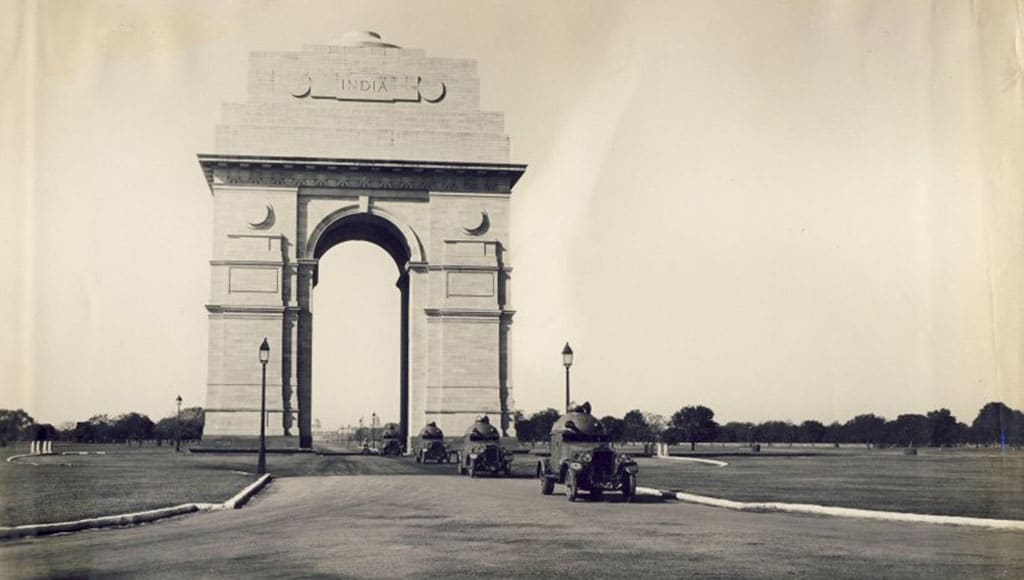Having already visited Amritsar and Mumbai, my recent visit to New Delhi added a new chapter to my travels in India. Unlike my past winter trips, this journey brought me face to face with the scorching summer heat, with temperatures soaring to an unbelievable 45 degrees.
Once in the centre of New Delhi, as always, the locals approached me and my friends with a mix of curiosity and opportunism. Some were genuinely interested in knowing where we were from, while others were eager to sell us something or direct us to their stalls. Eventually, one persistent tuk-tuk driver convinced us to let him show us around the city. He quickly found two other drivers to join, forming a small convoy. However, the intense heat soon became unbearable. After visiting a few markets and the India Gate, we decided to cut the tour short and retreat to the comfort of our air-conditioned hotel.
The India Gate, located in the heart of the city, is a large arch reminiscent of Paris’s Arc de Triomphe. The monument serves as a war memorial dedicated to the 70,000 Indian soldiers that lost their lives during the First World War.
European colonialism played an important role in India’s historical narrative. The Portuguese were the first Europeans to set foot in India and the last to leave. Vasco da Gama, celebrated for discovering the sea route from Europe to the East, set sail from Lisbon in 1497. For several decades, explorers had tried to reach the Indies. Thousands of sailors lost their lives, and dozens of ships were lost at sea. However, Vasco da Gama reached India on May 20, 1498, ushering in a new era of global exploration.
Despite their early arrival, Portuguese influence remained limited to their coastal colonies.
The British then arrived in India in 1608, over a century later, and steadily expanded their foothold, establishing several trading posts along the Indian coast, which eventually led to British dominance over the Indian subcontinent.
Fast forward another three centuries and Austria-Hungary declares war on Serbia kickstarting the First World War. Portugal initially remained neutral during the start of the war. However, escalating tensions with Germany in Africa, particularly concerning the colonies of Angola and Mozambique, compelled Portugal to join the Allies in early 1916. This decision was triggered by the seizure of German ships in Lisbon’s harbour, prompting Germany to declare war on Portugal on March 9.
India, as a British colony, was already committed to the war effort from the outset. Over one million Indian troops served overseas, a testament to India’s substantial contribution to the Allied forces. The British actively encouraged enlistment from across the Empire, emphasising the sense of duty and honour associated with military service.
The war period marked a significant socio-economic shift in India. Initially, the Indian military was dominated by the upper class. However, the dire conditions of food shortages, poverty, and social discrimination opened doors for the lower classes. Enlistment offered these individuals a steady income, uniforms, and three meals a day, presenting a unique opportunity to improve their socio-economic standing. For many, military service instilled a newfound sense of self-esteem, self-reliance, and pride.
After the end of the war, the cornerstone of the India Gate was laid in 1921 following an effort by the British to build war graves and memorials for the soldiers that were killed during the war. Construction then continued all the way up to 1931, the same year that New Delhi became the capital of India.
The names of over 13,000 Indian soldiers who died in the conflict were inscribed on the walls of the Gate, serving as a perpetual reminder of their valour. The aftermath of World War I marked a significant turning point in India’s history and the immense contribution of Indian soldiers to the war effort played a crucial role in fuelling the Indian independence movement. The sacrifices made by Indian troops overseas fostered a growing sense of national pride and fuelled the desire for self-governance. Yet India would only achieve independence from British rule on August 15, 1947, following a prolonged and arduous struggle.
Today, the India Gate stands not only as a war memorial but also as a symbol of India’s resilience and the sacrifices made by its people. Surrounded by expansive green lawns, the monument is a popular gathering spot for both locals and tourists alike. As I wandered around the area, local families often approached me, asking to take pictures with them and their children.
Although I only visited during the day, I was told that in the evenings, the monument and the nearby fountains are beautifully illuminated with a dazzling display of coloured lights. However, for anyone wondering, the temperature does not get much cooler at night.
|| features@portugalresident.com
Jay works for a private charter airline, and is also a UX designer and aspiring author who enjoys learning about history and other cultures




















